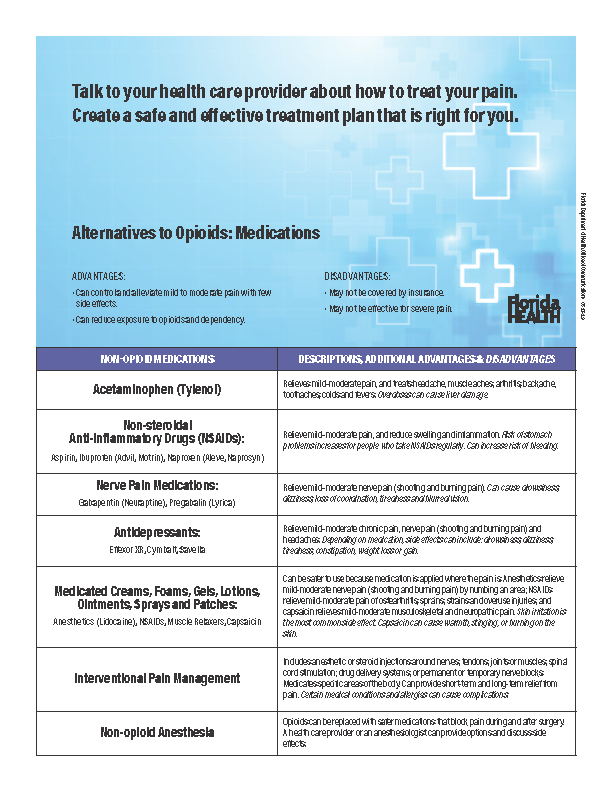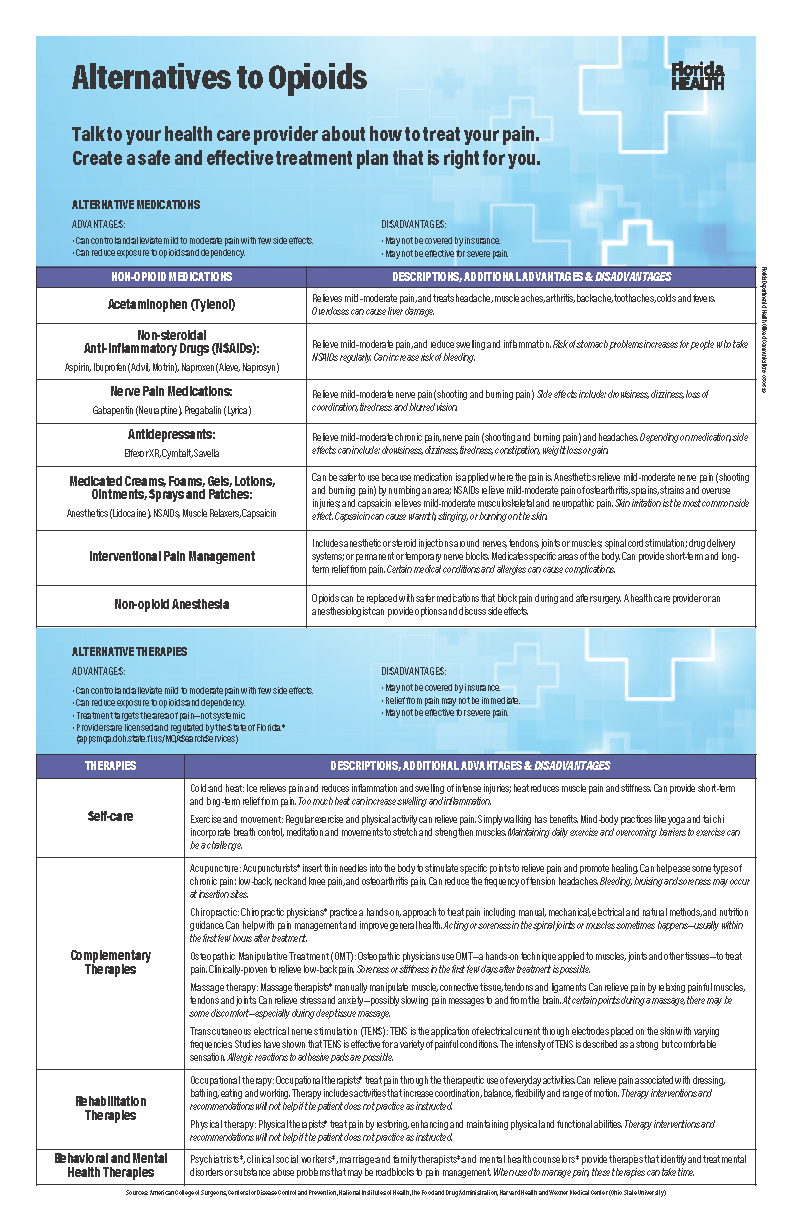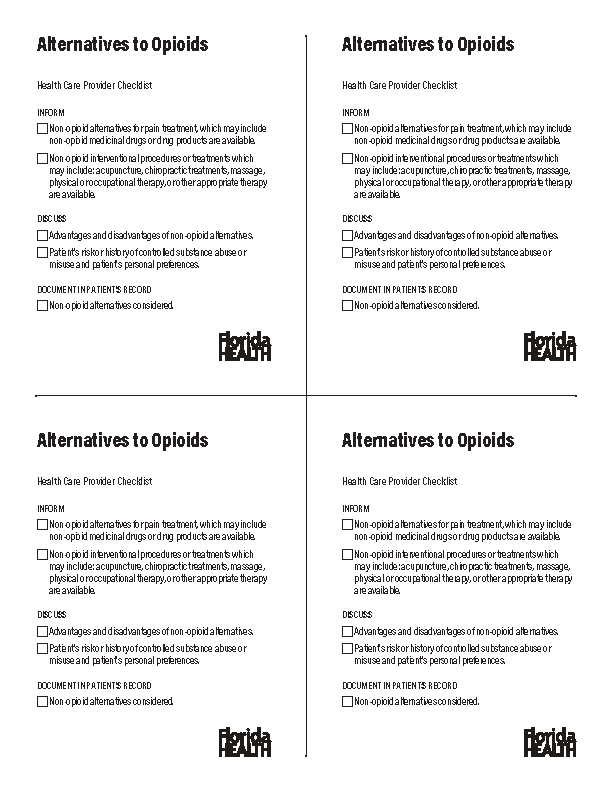It's a New Day in Public Health.
The Florida Department of Health works to protect, promote, and improve the health of all people in Florida through integrated state, county, and community efforts.
Non-Opioid Pain Management
Board of Medicine
 Download office-printer friendly 8.5 x 11 pamphlet —English | Español | Kreyòl
Download office-printer friendly 8.5 x 11 pamphlet —English | Español | Kreyòl
 Download office-printer friendly 11 x 17 poster —English | Español | Kreyòl
Download office-printer friendly 11 x 17 poster —English | Español | Kreyòl
 Download office-printer friendly pocket health care provider checklists: 4 per 8.5 x 11 sheet.
Download office-printer friendly pocket health care provider checklists: 4 per 8.5 x 11 sheet.

The Non-Opioid Alternatives Law Aims to Help Health Care Providers and Patients
Before administering anesthesia using a Schedule II controlled substance or prescribing or ordering a Schedule II controlled substance for pain treatment, a health care provider must talk to the patient about the risks of controlled substance abuse, and the advantages and disadvantages of nonopioid alternatives. The health care provider must give the patient or their representative, a copy of the Alternatives to Opioids pamphlet, created by the Florida Department of Health. The pamphlet can be provided in either printed or electronic format.
A health care provider is not required to discuss nonopioid alternatives or provide a printed copy of the pamphlet to a patient who is receiving a Schedule II controlled substance for pain treatment before critical care in a hospital or emergency department or when receiving hospice services (s. 400.6095).
The law applies to non-emergency situations only. Health care providers can post Alternatives to Opioids on their websites. The pamphlet and poster may be downloaded and printed from office printers.
Checklist for Health Care Providers
□ Inform the patient of available non-opioid alternatives for pain treatment which may include non-opioid medicinal drugs or drug products.□ Inform the patient of available non-opioid interventional procedures or treatments which may include: acupuncture, chiropractic treatments, massage, physical or occupational therapy, or any other appropriate therapy.
□ Discuss the advantages and disadvantages of non-opioid alternatives.
□ Discuss whether the patient is at high-risk or has a history of controlled substance abuse or misuse, and discuss the patient’s personal preferences.
□ Provide the patient with a printed Alternatives to Opioids educational pamphlet.
□ Document the non-opioid alternatives considered in the patient’s record.



Connect with DOH